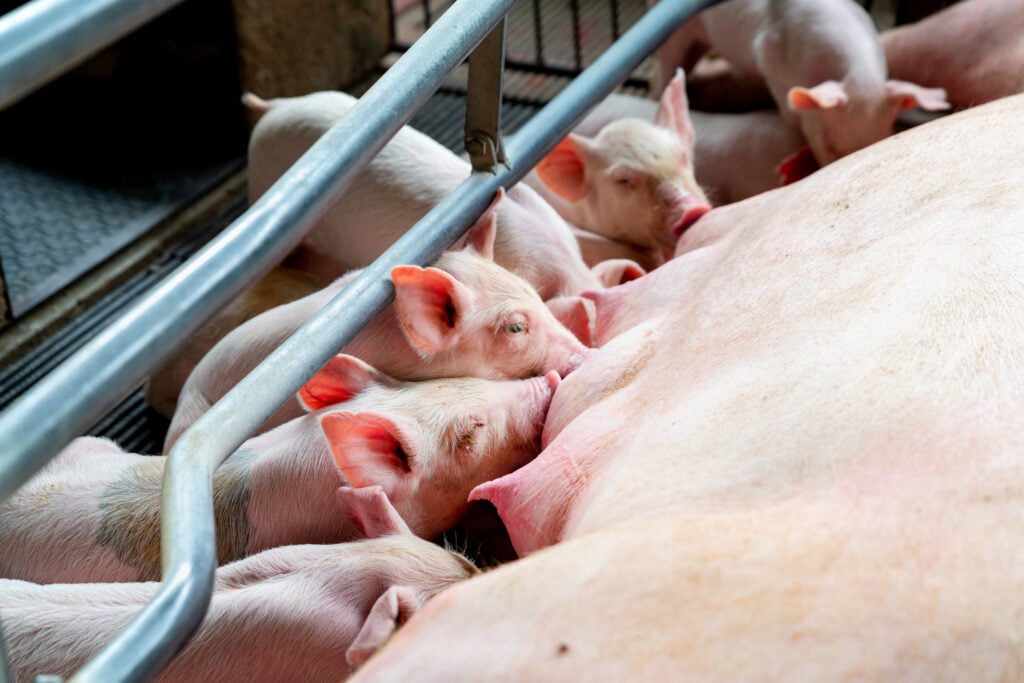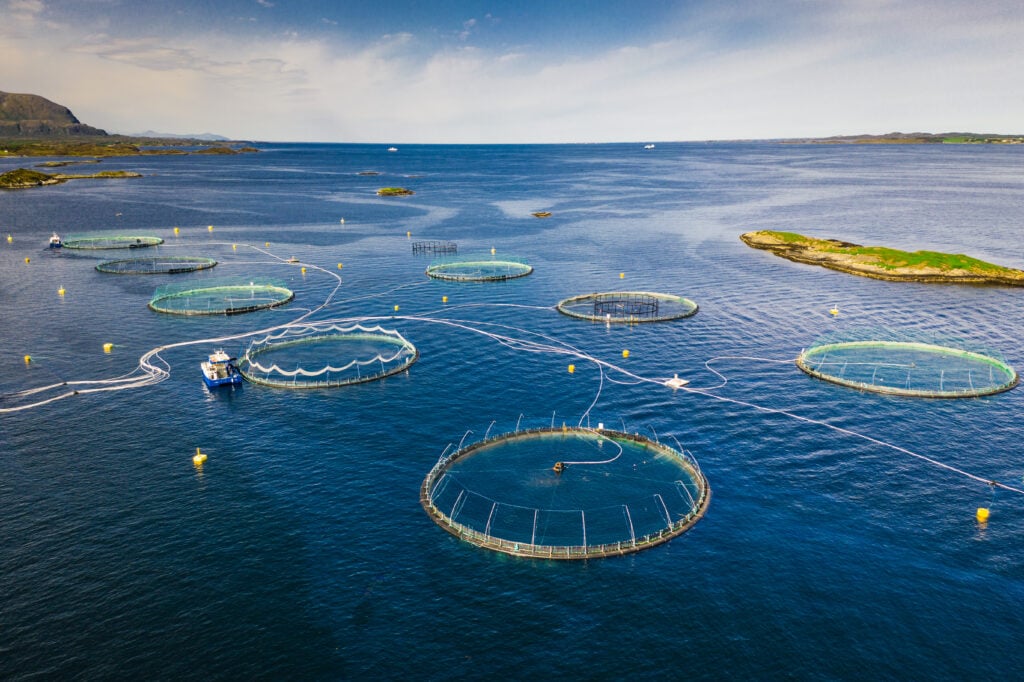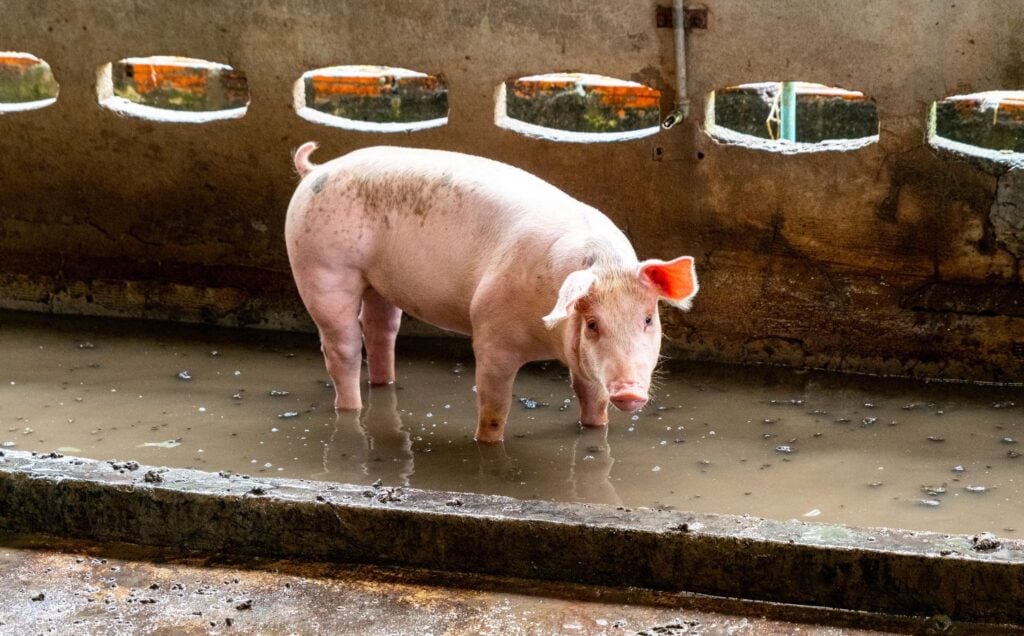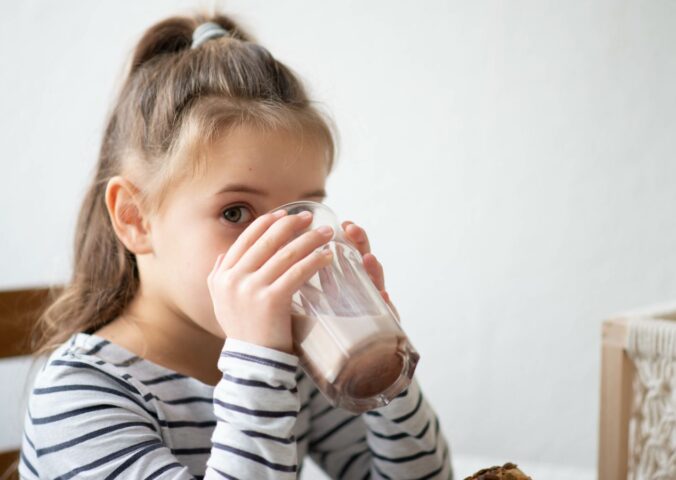In the latter half of 2022, a new report shone fresh light on the relationship between antibiotic-resistant bacteria, superbugs, and animal meat farming, particularly on factory farms.
It revealed that UK rivers and waterways were “awash with superbugs.” Specifically, waterways adjacent to factory farms and “high welfare” outdoor farms were found to contain antibiotic-resistant strains of E. coli and Staphylococcus aureus. Both of these can cause serious health complications in humans.
Slurry run off from intensive dairy farms was also spreading the bacteria, the report said.
“Our food system is broken. It is in part causing our climate to change. And now, we are on the edge of, yet another, global human health crisis. Except this is not one we will be able to vaccinate our way out of,” reads the report, published by World Animal Protection.
The organization’s farming campaigners manager, Lindsay Duncan, echoed this in a statement. They said: “The World Health Organization has estimated that antibiotic resistance will be the leading cause of death globally by 2050 with a total economic cost of £66 trillion – this is a human health crisis.”

What are ‘superbugs’? Are they dangerous?
Superbugs are strains of bacteria, viruses, and parasites that are resistant to most widely used antibiotics. This can lead to more severe cases of potentially preventable illnesses, as well as infections that cannot be treated with medication. Examples include drug-resistant salmonella, campylobacter, tuberculosis, and gonorrhea.
If antibiotics fail, chest infections, urinary tract infections (UTIs), cuts, insect bites, and even small scratches can develop into sepsis (blood-poisoning). This can be fatal if not treated quickly. In the UK, five people die from sepsis every hour, and the number is rising.
Global emergency
The Centers for Disease Control and Prevention (CDC) says antimicrobial resistance is an “urgent global public health threat.” It estimates that in the US alone, more than 2.8 million drug-resistant infections occur every year.
Many cases are fatal. As such, the CDC “dedicated” its 2019 report on the issue to “the 48,700 families [in the US] who lose a loved one each year to antibiotic resistance.”
Globally, it’s predicted that at least 700,000 people die every year from superbug infections. There is potential for this to rise to 10 million by 2050, the World Health Organization (WHO) warned in 2019. Meanwhile, antimicrobial resistance could force up to 24 million people into extreme poverty by the end of this decade.
Drug-resistant infections also impact companion animals, along with captive animals in zoos and those farmed for food. This is worsened by the fact that resistant germs can rapidly spread via soil, water, waste, and food supply chains.
What are antibiotics?
Antibiotics are a class of drugs that are used to treat bacterial infections. They work by either killing bacteria or inhibiting their growth and reproduction. Antibiotics are derived from natural substances produced by microorganisms (such as fungi or other bacteria) or are synthesized in laboratories.
Antibiotics first became widely available to the general population in the 1940s. Prior to this, giving birth and having surgery was far more dangerous. Additionally, sexually transmitted infections like syphilis and gonorrhoea could turn into a death sentence.
What causes antibiotic resistance?
In 1945, Alexander Fleming – who discovered penicillin, considered the world’s first broadly effective antibiotic – stressed the “dangers” of misusing antibiotics in his Nobel Prize acceptance speech, a warning that proved credible. Since then, the overprescription and misuse of antibiotics in medical settings has led to a sharp uptick in resistant bacteria.
Animal agriculture’s misuse of such medications has further exacerbated the issue. Soon after antibiotics were introduced, it was found that they could promote growth when fed to animals at low levels. This led to the widespread use of antibiotics on animals farmed for meat and other foods.
The practice was banned in the EU in 2006 and similar restrictions exist in the US. Due to loopholes in the laws however, farmers can still access vast quantities of drugs.
Antibiotics are now given to prevent disease in animals, and require a veterinary prescription. But factory farms, by their nature, are breeding grounds for disease. Large quantities of animals housed in close proximity to each other, often in unsanitary conditions, means illnesses can quickly spread. Commonly, they can infect an entire group and potentially be transmissible to humans.
To prevent this, farmers feed antibiotics to their animals to keep them healthy enough to reach slaughter age – their boosted growth rate a profitable side effect.
What percent of antibiotics are given to animals?
Antibiotic use in livestock now outweighs human consumption in many countries. In the US, for example, some 80 percent of all antibiotics are used as growth supplements and to control infection in non-human animals.
In the UK, in 2017, 36 percent of antibiotics were sold for use in non-human animals, while 64 percent were for human use. A lower proportion than in many other countries, but still a considerable amount (226 tons in 2018).
In Canada, it is estimated that around 78 percent of the medically important antibiotics distributed are for use in non-human animals.
According to data from 31 European countries, in 2019, approximately 90.9 percent of the total weight of antimicrobial agents sold for veterinary use was intended for animals raised for human consumption.
Further, in India, antibiotic use in animals is projected to increase by 82 percent by 2030. That’s according to a study published in the journal Science in 2015, which also projected an 82 percent increase in global antibiotic consumption in food animal production by 2030.
How do people catch superbugs from food?
When animals are slaughtered for food, resistant germs in their gut can contaminate the products made from their meat, milk, or eggs. Humans can get sick from eating or handling contaminated food or drink products.
The animal farming industry’s misuse of antibiotics has consequences for other sectors, too. According to the CDC’s 2019 report, when the waste of “contaminated” animals is used as fertilizer on farms, fruits and vegetables can also become contaminated.
Animal farming has been repeatedly linked to creating resistant bacteria. For example, the CDC says the production and consumption of chicken, pork, turkey, and beef is to blame for resistant salmonella strains.
Superbugs are everywhere
In July 2022, it was reported that a new superbug had been discovered in UK pork products.
Found in more than 10 percent of all pork meat sampled, the enterococci bacteria strain was shown to be rampant. When transmitted to humans, it can cause infections resulting in blood, brain, and heart complications. Analysis of the bacteria strain found that it was resistant to key “last resort” antibiotic treatments. And this was not an isolated case.
In December 2022, it was revealed that US beef farms are still routinely giving antibiotics to their livestock. Vegan senator Cory Booker commented that the practice represented a “reckless overuse” of such medications. And, that it posed a “deadly public health threat.”
The scale of the problem was found to be colossal. Some of the largest food retailers, including McDonald’s and Walmart, are supplied by such meat farms. Amongst the antibiotics being given to animals were those classified as HP-CIAs, or “highest priority critically important antibiotics.” These are, again, prescribed to humans only as a last resort.

Following the UK pork and US beef concerns, Australian salmon farmers were also found to be guilty of extreme antibiotic use.
Just days after the US beef news broke, reports came to light that medication use in Antipodean salmon farming could be increasing the risk of superbugs. It came after two salmon farms in Tasmania used more than a ton of antibiotics in just a 12-month period.
Making our food system safer
According to Humane Being, a nonprofit that campaigns for a future free from animal exploitation, in order to prevent antibiotic resistance and stem the risk of future pandemics, we must end intensive factory farming.
Humane Being took the UK government to court in 2022, accusing it of concealing the public health risks of animal farming. The first-of-its-kind legal appeal argued that despite acknowledging the threat posed, the UK government has not taken adequate preventative actions. This includes making the public aware of the risks linked to animal farming – including antibiotic resistance, environmental damage, and heightened pandemic risk.
Dr. Alice Brough is a pig veterinarian who was a co-claimant in the case. She said at the time: “Every part of this practice is a ticking time bomb for our species.”
Humane Being is joined by a slew of other organizations championing for the end of animal agriculture. In its place, they want to see plant-based food systems ushered in. The movement has continued to pick up pace in recent years, with the alternative protein sectors seeing increased sales while animal meat and milk figures drop.







